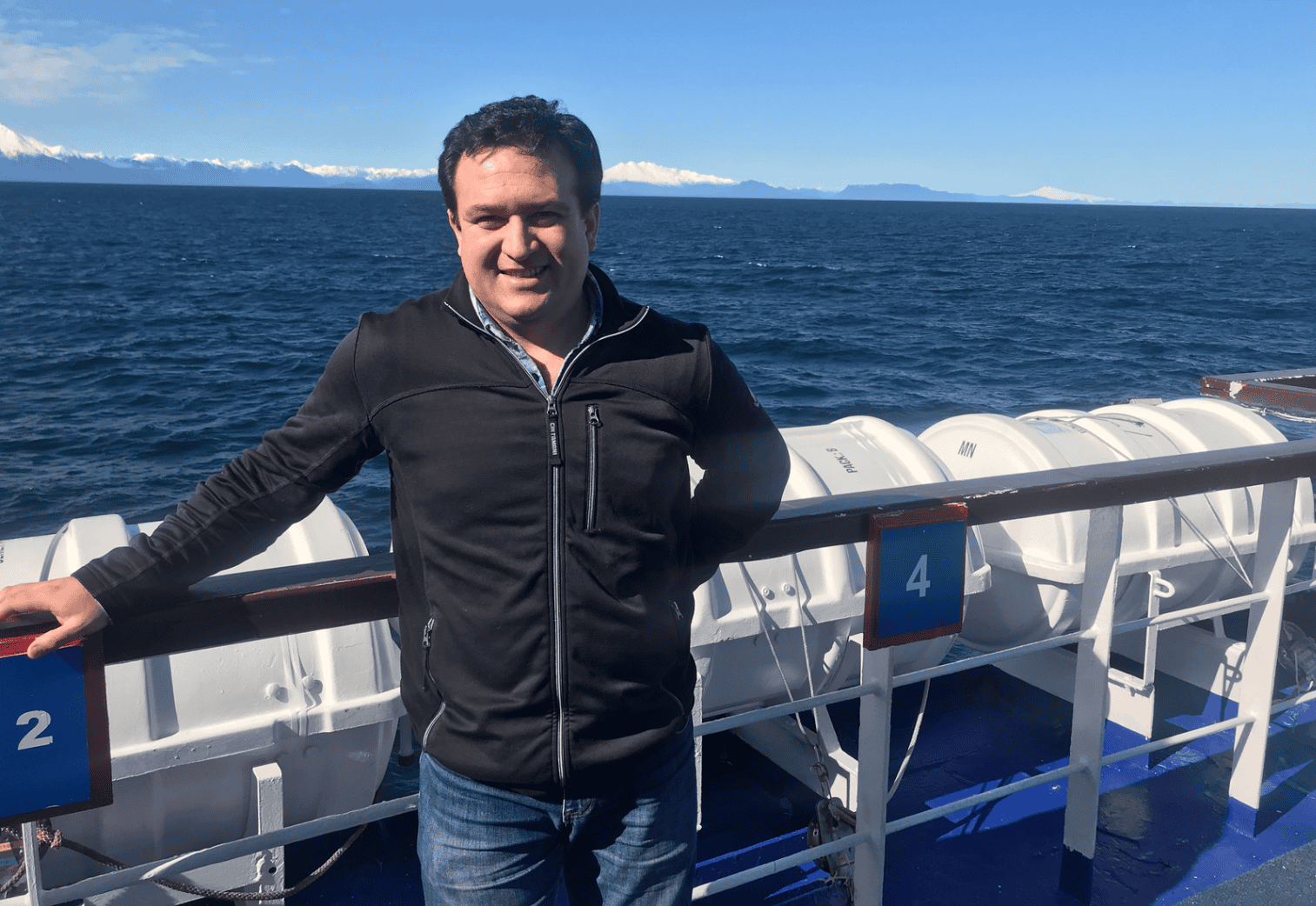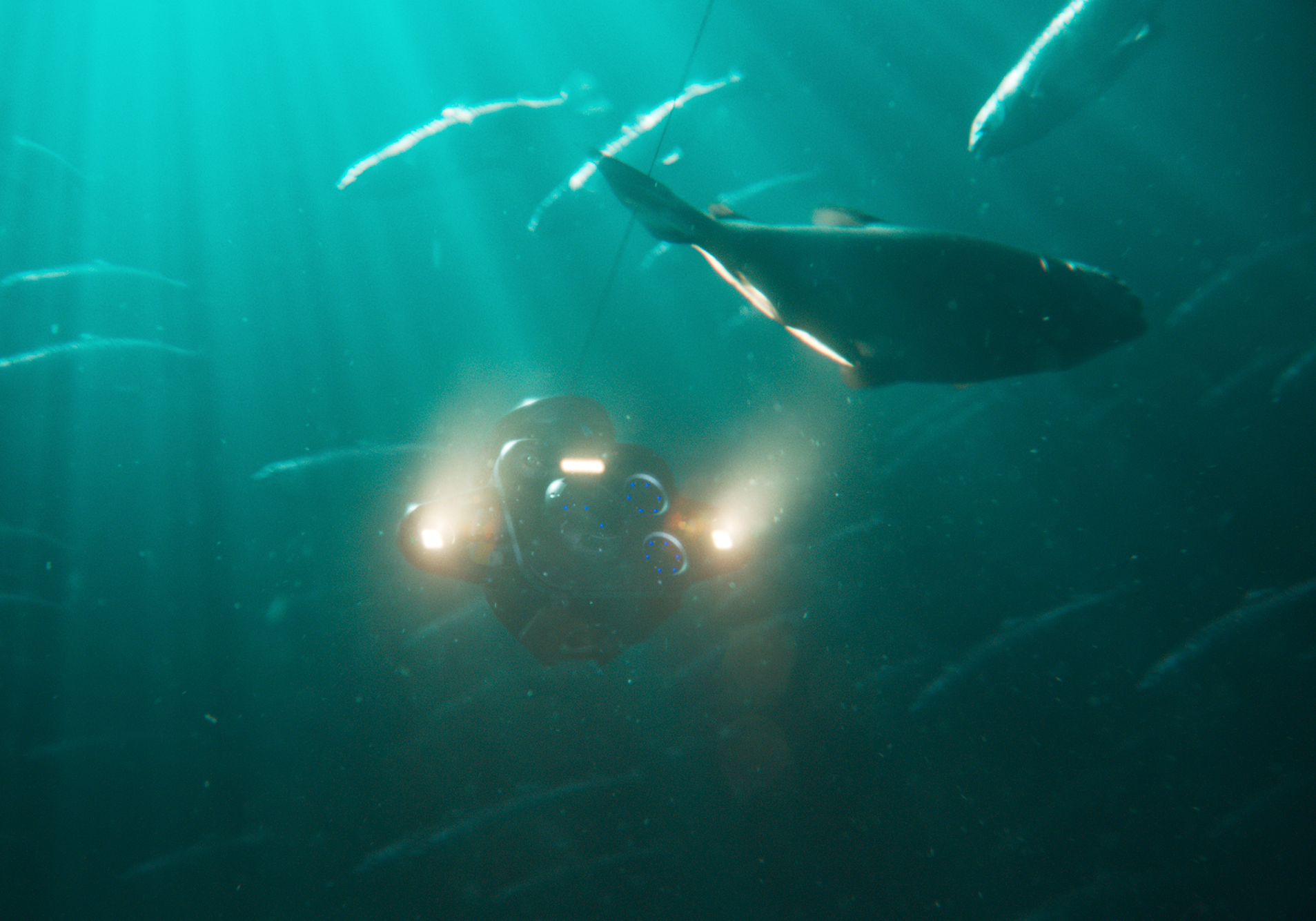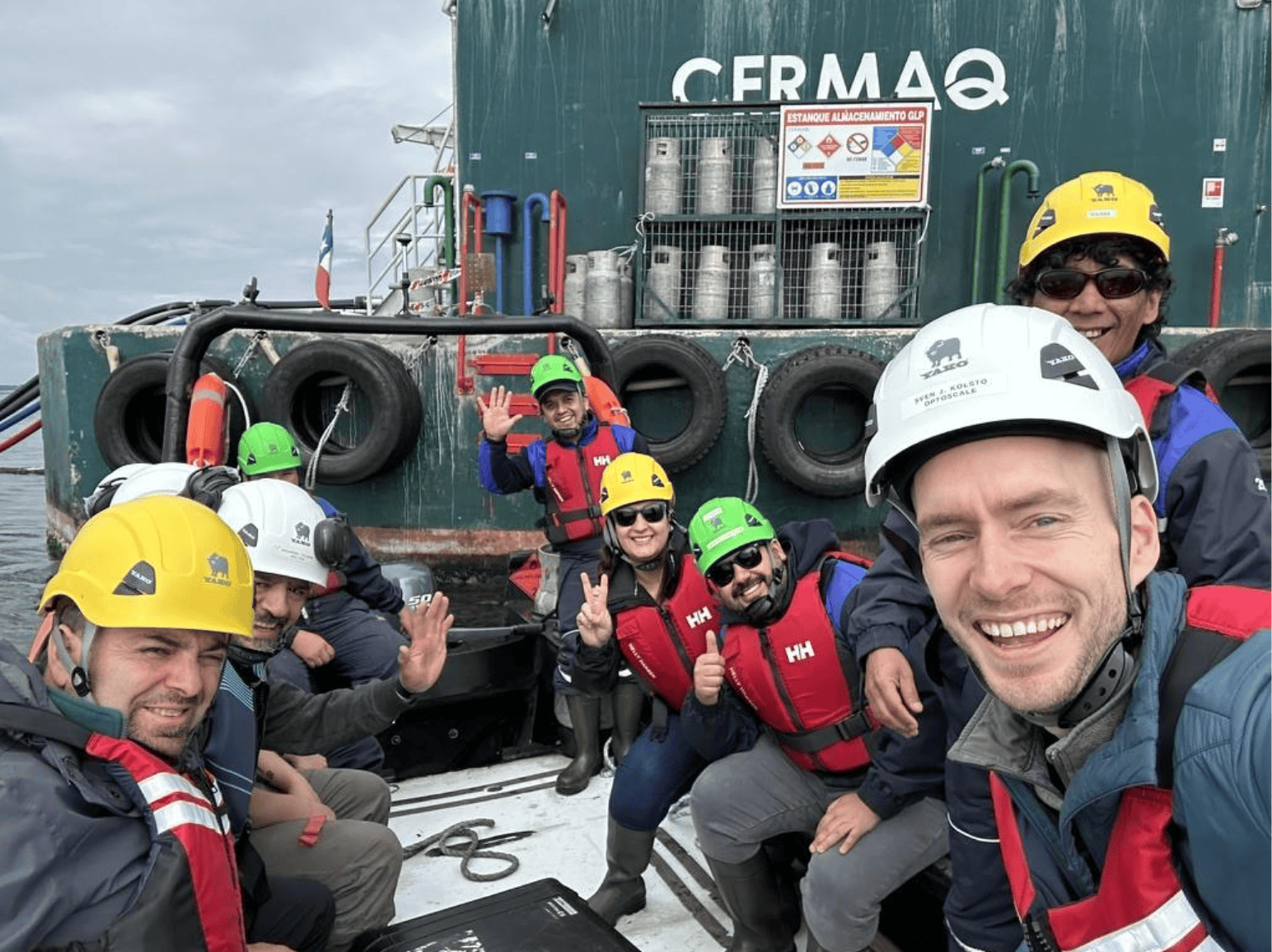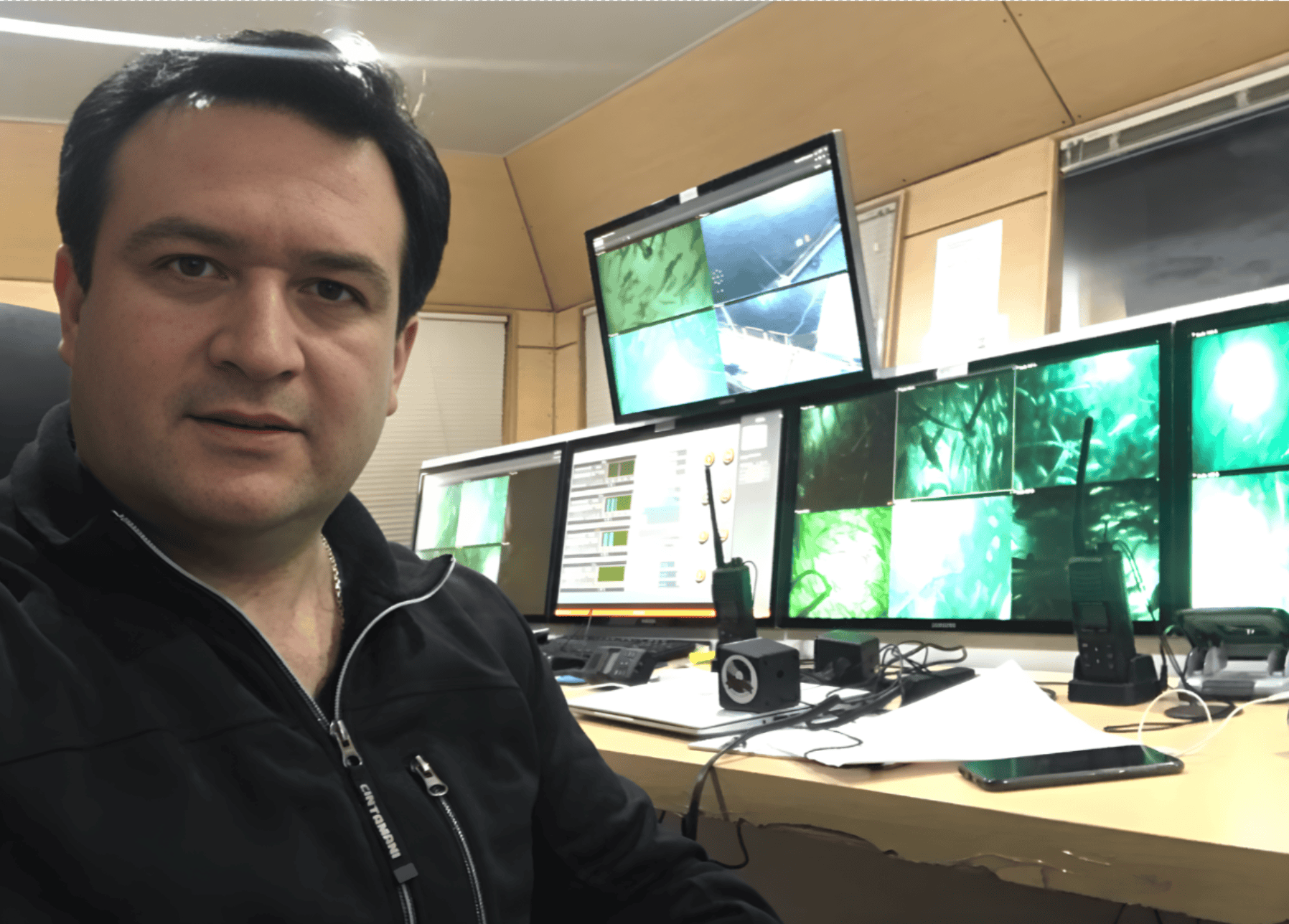Cesar Lopez looks ahead with confidence in his new role — and takes the lead in OptoScale’s continued growth in Chile.

OptoScale strengthens its presence in Chile with key hire
We’ve been present in Chile for years. Now we’re taking the next step by expanding our local team — welcoming industry profile Cesar López as our new Sales Manager.
A major step in an important market
Chile has become one of our most important markets, with demanding biological conditions and a growing need for continuous, reliable decision support.
“Chile is extremely important to us,” says CEO Sven Kolstø. “We’re working with strong customers and skilled teams in the region. With a local office, we can stay even closer and support farmers faster and better.”
Precision that strengthens decisions – every day
Our technology tracks growth, lice, behaviour, and welfare — around the clock. It provides farmers with consistent, high-quality insight across the entire production cycle.
“We don’t just deliver underwater cameras,” says Cesar. “We provide precise, continuous data that helps farmers make informed decisions — every single day. When information is clear, you go from guessing to knowing.”
Biological challenges demand more precision
The biological pressure in Chile remains high.
“We’re still facing challenges with lice, SRS, and welfare. On top of that, we’re seeing issues like melanosis, gill disease, and oxidative stress,” explains Cesar. “Many tools exist, but they rarely speak to each other.”
That’s why collaboration with farmers is essential.
“What I like about OptoScale is that we develop solutions together with the users. We listen, we test in the field, and we adapt underwater. That makes the data truly useful – and makes a difference.”

OptoScale’s bioscope collects continuous, high-resolution data on growth, lice, welfare and behaviour.
Experience that matches Chilean needs
Cesar López has extensive experience in fish health and customer support — a combination he believes is key to understanding the day-to-day challenges of Chilean farmers.
“Cesar knows the Chilean industry extremely well,” says CEO Sven Kolstø. “He understands what’s happening out in the cages and shares our belief in precision, openness, and close collaboration. His experience makes him the right person for this phase.”
Cesar adds: “OptoScale is serious about precision aquaculture, and that’s where the industry is heading. Their values align with how I believe farming should be: safe growth, long-term thinking, and close dialogue with farmers.”
Closer collaboration through local presence
With this scale-up, the goal is to strengthen daily collaboration and in-field follow-up across Chile.
“Farmers can expect a partner who understands production realities and is available when needed,” says Lopez. “We’ll build a strong local team and develop solutions together with farmers — solutions that actually make a difference.”
Kolstø emphasizes: “This is a long-term investment. Our goal is to contribute to more stable production with precise, reliable data.”

OptoScale CEO Sven Kolstø on a visit at Cermaq Chile.
Supporting continued growth in Chilean salmon farming
The Chilean salmon industry is expected to continue growing in the coming years — increasing the need for better control and earlier warnings.
“The industry is developing quickly,” says Lopez. “And as production expands, the need for detailed insight across the value chain grows as well. OptoScale will contribute with continuous monitoring and predictive models that help farmers act early and protect their fish.”
He sums it up: “OptoScale is a partner that gives farmers precise and relevant data to improve welfare, health, and performance.”
